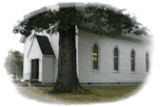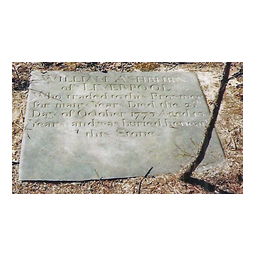Warebottom Church
Bermuda Hundred Campaign in Chesterfield County, VA
Warebottom Church Battle Park
On May 20, 1864, Beauregard's Confederates attacked Butler's Bermuda Hundred line around rustic Ware Bottom Church (pictured below) in Chesterfield County, Virginia. About 10,000 troops were involved in this action. Before the day was done,1,400 dead and wounded men from fourteen American states lay sprawled and bleeding upon the ground. After driving back Butler's advanced pickets, the Confederates constructed the Howlett Line, effectively bottling up the Federals at Bermuda Hundred. Confederate victories at Proctor's Creek and Ware Bottom Church enabled Beauregard to detach strong reinforcements for General Lee's army in time for the fighting at Cold Harbor.
A nearby spring was a favorite gathering spot for both armies taking a respite from the battles. Here they exchanged stories, tobacco, food and other sundries until the Confederate officers stopped the practice. The Spring was in a deep ravine among old pines and oaks along present day Rt.10. At the time of the Civil War the spring consisted of a circular brick wall about nine feet in diameter and 5 feet deep. The spring has been infilled with leaves, dirt and trash. The spring is not part of the present day battlefield park.
This climactic battlefield of the Bermuda Hundred Campaign was overshadowed by larger events of the time and lapsed into relative obscurity. Today, sadly, the battleground itself has all but disappeared and efforts are ongoing to preserve what remains of the site. A Chesterfield County ordinance is now in place that prohibits relic hunters and scavengers from destroying the site. The property comprises the heart of the Ware Bottom Church battlefield and also contains a portion of the Howlett Line, the strong defensive line that the Confederates built between the James and Appomattox rivers to "bottle up Butler" Union Gen. Benjamin Butler and his Army of the James. Earthworks on the site are 8 feet high and 20 feet thick, according to Chesterfield Historian, George Fickett, and extend for 1,200 feet in an unbroken line. "It's a really significant site." The 10 acres is part of a 60-acre property that includes a dozen cannon emplacements and the route of the entire Confederate assault against the Union works. The park features a trail with interpretive signage.
Ware Bottom Church Spring and Cemetery
Bermuda Hundred Campaign
Ware Bottom Spring
Ware Bottom Church Battle was the site of a fierce and intense battle between the Union and Confederate forces during the Bermuda Hundred Campaign. They shared a spring, commonly known as the Ware Bottom Spring (pictured above), used to replenish their water supplies and often exchanged goods such as tobacco with their adve saries. They also sharied stories from home, newspapers and tobacco. Afterwards, they woiuld resume shooting at one another. For a brief period, there was a peace among them at the "water hole".
The Warebottom Church Graveyard was destroyed by a bulldozer and was stopped only when the CHSV heard about it and responded. Many tombstones and gravesites were destroyed because of carelessness of the owner. The names of the those entombed here were scrambled.
Warebottom Church Battle Notes
After the battle, the Confederates constructed the Howlett Line, a series of strong defensive works from the James to the Appomattox River, trapping Butler's army on the Bermuda Hundred peninsula. The church stood for four weeks after the battle, until it was destroyed by Parker's Virginia Battery on the Howlett Line, who were harassed by Union sharpshooters inside the church. The cemetery was bullodozed late in the 20th Century by a careless property owner. Confederate gains at the Bermuda Hundred battles allowed Beauregard to send Brig. Gen. Robert Hoke's division to reinforce Lee's army at Cold Harbor, while Grant was reinforced with the Union Eighteenth Corps from Butler. In June, Grant's movement against Petersburg caused Beauregard to abandon the Bermuda Hundred line in order to help Lee defend that strategic city. For a short while, the Warebottom Church area once again lay behind Union lines.



